Changes in anxiety and depression over 2 years in medically stable patients after myocardial infarction and their spouses in the Home Automatic External Defibrillator Trial (HAT): a longitudinal observational study
- PMID: 20930046
- PMCID: PMC3131214
- DOI: 10.1136/hrt.2009.184119
Changes in anxiety and depression over 2 years in medically stable patients after myocardial infarction and their spouses in the Home Automatic External Defibrillator Trial (HAT): a longitudinal observational study
Abstract
Objective: To compare the long-term effects of cardiopulmonary resuscitation (CPR) training and CPR/automatic external defibrillator (AED) training on anxiety and depression of patients who were medically stable after myocardial infarction (MI) and of their spouses/companions.
Design: Longitudinal.
Participants: Post-MI patients (N=460) and their spouses/companions from the Home Automatic External Defibrillator Trial.
Main outcome measures: Depression (Beck Depression Inventory-II scores) and anxiety (State Trait Anxiety Inventory scores).
Results: At study entry, 25% of the patients and 15% of their spouses were depressed and 21% of the patients and 19% of the spouses were anxious. The prevalence of depression and anxiety did not change over time in the patients or their spouses. Average depression and anxiety decreased for patients but not for spouses. An intervention group did not contribute significantly to these changes. Psychological distress, indicated by depression or anxiety of the spouse or the patient, occurred in 191 couples. Among psychologically distressed patients (N=128), depression and anxiety decreased over time; the intervention group did not contribute to these changes. The reduction in anxiety among male patients was greater than in female patients (p=0.012, 95% CI 0.002 to 0.018). Among psychologically distressed spouses (N=118), depression decreased over time independently of the intervention. Changes in spouse anxiety depended on the intervention group (p=0.012, 95% CI 0.001 to 0.012); anxiety decreased significantly in the CPR and remained high in the CPR/AED group.
Conclusion: There was no evidence that home AEDs caused psychological distress among patients. Even among those who were psychologically distressed when they were assigned to receive either CPR training or CPR/AEDs, home AEDs did not influence changes in patients' depression or anxiety or spouses' depression in comparison with CPR training. Among psychologically distressed spouses, AEDs may keep anxiety higher than it would be otherwise. Interventions to reduce anxiety of spouses who are psychologically distressed may be indicated when their partners receive an AED.
Figures
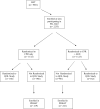
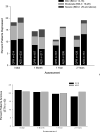
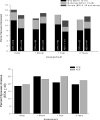
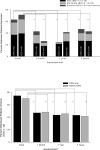
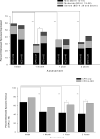
Similar articles
-
Quality of life effects of automatic external defibrillators in the home: results from the Home Automatic External Defibrillator Trial (HAT).Am Heart J. 2010 Apr;159(4):627-634.e7. doi: 10.1016/j.ahj.2010.01.013. Am Heart J. 2010. PMID: 20362722 Free PMC article.
-
Role of spousal anxiety and depression in patients' psychosocial recovery after a cardiac event.Psychosom Med. 2004 Jul-Aug;66(4):527-32. doi: 10.1097/01.psy.0000130493.80576.0c. Psychosom Med. 2004. PMID: 15272098
-
Changes in depressive symptoms in spouses of post myocardial infarction patients.Asian Nurs Res (Korean Soc Nurs Sci). 2012 Dec;6(4):158-65. doi: 10.1016/j.anr.2012.10.003. Epub 2012 Nov 2. Asian Nurs Res (Korean Soc Nurs Sci). 2012. PMID: 25031118
-
Impact of cardiopulmonary resuscitation training on perceived control in spouses of recovering cardiac patients.Res Nurs Health. 2000 Aug;23(4):270-8. doi: 10.1002/1098-240x(200008)23:4<270::aid-nur3>3.0.co;2-8. Res Nurs Health. 2000. PMID: 10940952 Clinical Trial.
-
Spousal depression, anxiety, and suicide after myocardial infarction.Eur Heart J. 2013 Mar;34(9):649-56. doi: 10.1093/eurheartj/ehs242. Epub 2012 Aug 21. Eur Heart J. 2013. PMID: 22915163
Cited by
-
Factors associated with depressive symptoms in patients with acute coronary syndrome undergoing percutaneous coronary intervention: A prospective cohort study.Nurs Open. 2018 Jun 28;5(4):583-592. doi: 10.1002/nop2.171. eCollection 2018 Oct. Nurs Open. 2018. PMID: 30338104 Free PMC article.
-
The Effect of Cardiopulmonary Resuscitation and Cardiac Chest Pain Management Training on Perceived Control, Depression, Stress and Anxiety in the Spouses of the Patients with Myocardial Infarction: A Randomized Controlled Trial.Int J Community Based Nurs Midwifery. 2020 Apr;8(2):116-126. doi: 10.30476/IJCBNM.2020.81315.0. Int J Community Based Nurs Midwifery. 2020. PMID: 32309453 Free PMC article.
-
Telephone-based screening tools for mild cognitive impairment and dementia in aging studies: a review of validated instruments.Front Aging Neurosci. 2014 Feb 25;6:16. doi: 10.3389/fnagi.2014.00016. eCollection 2014. Front Aging Neurosci. 2014. PMID: 24611046 Free PMC article. Review.
-
Biopsychosocial predictors of coping strategies of patients postmyocardial infarction.Int J Nurs Pract. 2016 Oct;22(5):493-502. doi: 10.1111/ijn.12465. Epub 2016 Aug 4. Int J Nurs Pract. 2016. PMID: 27492735 Free PMC article.
References
-
- Rosamond W, Flegal K, Furie K, et al. Heart disease and stroke statistics--2008 update: a report from the American Heart Association Statistics Committee and Stroke Statistics Subcommittee. Circulation. 2008;117(4):e25–146. - PubMed
-
- Bardy GH, Lee KL, Mark DB, et al. Home use of automated external defibrillators for sudden cardiac arrest. N.Engl.J.Med. 2008;358(17):1793–804. - PubMed
-
- Callans DJ. Can home AEDs improve survival? N.Engl.J.Med. 2008;358(17):1853–55. - PubMed
-
- Becker L, Eisenberg M, Fahrenbruch C, Cobb L. Public locations of cardiac arrest. Implications for public access defibrillation. Circulation. 1998;97(21):2106–9. - PubMed
-
- Eisenberg MS, Horwood BT, Cummins RO, Reynolds-Haertle R, Hearne TR. Cardiac arrest and resuscitation: a tale of 29 cities. Ann.Emerg.Med. 1990;19(2):179–86. - PubMed
